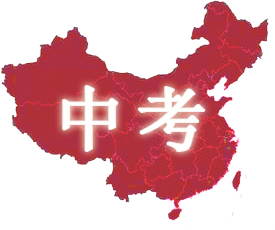

端午节(As we enter the month of June, we find ourselves already in the middle of the year. However, according to the Chinese lunar calendar, the fifth month just begins and the Chinese people are preparing to celebrate another traditional festival -- the Duanwu Festival.)
The Duanwu Festival falls on the fifth day of the fifth month of the Chinese lunar calendar. For thousands of years, Duanwu has been marked by eating Zongzi and racing dragon boats.
The taste of Zongzi, a pyramid-shaped dumpling made of glutinous rice and wrapped in bamboo or reed leaves to give it a special flavor, varies greatly across China. Zongzi is often made of rice mixed with dates in Northern China, because dates are abundant in the area. Eastern Chinas Jiaxing County is famous for its pork-stuffed Zongzi. In the southern province of Guangdong, people stuff Zongzi with pork, ham, chestnuts and other ingredients, making them very rich in flavor. In Sichuan province, Zongzi is usually served with a sugar dressing. Most people still maintain the tradition of eating Zongzi on the day of the Duanwu Festival. But the special delicacy has become so popular that you can now buy it all the year round.
Duanwu is also known as the Dragon Boat Festival, because dragon boat races are the most popular activity during the festival, especially in Southern China. A dragon boat is shaped like a dragon, and is brightly painted in red, white, yellow and black. Usually, a dragon boat is 20 to 40 meters long, and needs several dozen people to row it. Boatmen row the boat in cadence with the drumbeats, as the captain standing in the bow of the boat waves a small flag to help coordinate the rowing. Before the race gets underway, a solemn ceremony is held to worship the Dragon King.
Dragon boat racing is quite a spectacle, with drums beating, colorful flags waving, and thousands of people cheering on both sides of the river. Nowadays, it has become a popular sporting activity in Southern China. International dragon boat races are held in Guangzhou and Hong Kong every year.
The Duanwu Festival used to have other interesting customs that are no longer commonly observed, though you may still find them practiced in some rural areas.
Ancient Chinese believed the day of Duanwu was unlucky because midsummer was just around the corner. The hot weather used to bring various diseases, which could spread rampantly. Dispelling disease and driving out evil were the main purpose of the festival. People would paste on their front doors pictures of Zhongkui, a legendary Chinese ghost-catcher. People would also use cattail and mugwort leaves to drive away mosquitoes and other insects.
Since children are generally the most vulnerable to disease, they received extra care at this special time. Children would wear necklaces or bracelets, made of red, yellow, blue, white and black threads, to keep evil away from them. They would also receive colorful pouches containing fragrant herbal medicines as presents. They hung these around their necks, and would compete with one another to see whose pouch had the finest needlework. Mothers also made sure to bathe their children in water boiled with herbal medicines. Modern science has proven that these medicines are, in fact, quite beneficial to health.
Ancient Chinese believed realgar was an antidote for all poisons, and therefore most effective to drive away evil spirits and kill insects. So everyone would drink some realgar wine during the Duanwu Festival, and children would have the Chinese character for King written on their foreheads with realgar wine.
端午节到了。
香喷喷的粽子熟了,黄澄澄的雄黄酒酿好了,赛龙舟的船也准备好了,端午节也就随风而来了。
端午节有一千多年的历史了,传说是为了纪念大诗人屈原的。春秋战国时期,楚国有位著名的大臣,名叫屈原。他不仅诗词写得好,还有相当的谋略;既是一位诗人,也是一位政治家。屈原出身于楚国的贵族,起初颇受楚怀王的信任,曾做到左徒的高官,他主张改良内政,联齐抗秦。但是,楚怀王的令尹子椒、上官大夫靳尚和他的宠妃郑袖等人,由于受了秦国使者张仪的贿赂,不但阻止怀王接受屈原的意见,并且进谗言使怀王疏远了屈原。结果楚怀王被秦国诱去,囚死在秦国。顷襄王即位后,屈原继续受到迫害,并一再遭到放逐。公元前278年,秦国大将白起带兵南下,攻破了楚国国都,屈原对前途感到绝望,就在农历五月除五投汨罗江自尽。屈原写了很多不朽诗篇,比如有:《离骚》、《天问》等等
端午节还有许多别名,有:浴兰节、女儿节、五五节、端阳节等等
我非常喜欢端午节,因为这其中寓含着很丰富的意义。
端午节的习俗
我国民间过端午节是较为隆重的,庆祝的活动也是各种各样,比较普遍的活动有以下种种形式:
赛龙舟:
賽龙舟,是端午节的主要习俗。相传起源于古时楚国人因舍不得贤臣屈原投江死去,许多人划船追赶拯救。他们争先恐后,追至洞庭湖时不见踪迹。之后每年五月五日划龙舟以纪念之。借划龙舟驱散江中之鱼,以免鱼吃掉屈原的身体。竞渡之习,盛行于吴、越、楚。
其实,龙舟竞渡早在战国时代就有了。在急鼓声中划刻成龙形的独木舟,做竞渡游戏,以娱神与乐人,是祭仪中半宗教性、半娱乐性的节目。
后来,赛龙舟除纪念屈原之外,在各地人们还付予了不同的寓意。
江浙地区划龙舟,兼有纪念当地出生的近代女民主革命家秋瑾的意义。夜龙船上,张灯结彩,来往穿梭,水上水下,情景动人,别具情趣。贵州苗族人民在农历五月二十五至二十八举行龙船节,以庆祝插秧胜利和预祝五谷丰登。云南傣族同胞则在泼水节赛龙舟,纪念古代英雄岩红窝。不同民族、不同地区,划龙舟的传说有所不同。直到今天在南方的不少临江河湖海的地区,每年端节都要举行富有自己特色的龙舟竞赛活动。
清乾隆二十九年(1736年),台湾开始举行龙舟竞渡。当时台湾知府蒋元君曾在台南市法华寺半月池主持友谊赛。现在台湾每年五月五日都举行龙舟竞赛。在香港,也举行竞渡。
此外,划龙舟也先后传入邻国日本、越南等及英国。1980年,赛龙舟被列入中国国家体育比赛项目,并每年举行屈原杯龙舟赛。1991年6月16日(农历五月初五),在屈原的第二故乡中国湖南岳阳市,举行首届国际龙舟节。在竞渡前,举行了既保存传统仪式又注入新的现代因素的龙头祭。龙头被抬入屈子祠内,由运动员给龙头上红(披红带)后,主祭人宣读祭文,并为龙头开光(即点晴)。然后,参加祭龙的全体人员三鞠躬,龙头即被抬去汩罗江,奔向龙舟赛场。此次参加比赛、交易会和联欢活动的多达60余万人,可谓盛况空前。尔后,湖南便定期举办国际龙舟节。赛龙舟将盛传于世。
端午食粽
端午节吃粽子,这是中国人民的又一传统习俗。粽子,又叫角黍、筒粽。其由来已久,花样繁多。
据记载,早在春秋时期,用菰叶(茭白叶)包黍米成牛角状,称角黍;用竹筒装米密封烤熟,称筒粽。东汉末年,以草木灰水浸泡黍米,因水中含碱,用菰叶包黍米成四角形,煮熟,成为广东碱水粽。
晋代,粽子被正式定为端午节食品。这时,包粽子的原料除糯米外,还添加中药益智仁,煮熟的粽子称益智粽。时人周处《岳阳风土记》记载:俗以菰叶裹黍米,煮之,合烂熟,于五月五日至夏至啖之,一名粽,一名黍。南北朝时期,出现杂粽。米中掺杂禽兽肉、板栗、红枣、赤豆等,品种增多。粽子还用作交往的礼品。
到了唐代,粽子的用米,已白莹如玉,其形状出现锥形、菱形。日本文献中就记载有大唐粽子。宋朝时,已有蜜饯粽,即果品入粽。诗人苏东坡有时于粽里见杨梅的诗句。这时还出现用粽子堆成楼台亭阁、木车牛马作的广告,说明宋代吃粽子已很时尚。元、明时期,粽子的包裹料已从菰叶变革为箬叶,后来又出现用芦苇叶包的粽子,附加料已出现豆沙、猪肉、松子仁、枣子、胡桃等等,品种更加丰富多彩。
一直到今天,每年五月初,中国百姓家家都要浸糯米、洗粽叶、包粽子,其花色品种更为繁多。从馅料看,北方多包小枣的北京枣粽;南方则有豆沙、鲜肉、火腿、蛋黄等多种馅料,其中以浙江嘉兴粽子为代表。吃粽子的风俗,千百年来,在中国盛行不衰,而且流传到朝鲜、日本及东南亚诸国。
佩香囊:
端午节小孩佩香囊,传说有避邪驱瘟之意,实际是用于襟头点缀装饰。香囊内有朱砂、雄黄、香药,外包以丝布,清香四溢,再以五色丝线弦扣成索,作各种不同形状,结成一串,形形色色,玲珑可爱。
悬艾叶菖蒲:
民谚说:清明插柳,端午插艾。在端午节,人们把插艾和菖蒲作为重要内容之一。家家都洒扫庭除,以菖蒲、艾条插于门眉,悬于堂中。并用菖蒲、艾叶、榴花、蒜头、龙船花,制成人形或虎形,称为艾人、艾虎;制成花环、佩饰,美丽芬芳,妇人争相佩戴,用以驱瘴。
艾,又名家艾、艾蒿。它的茎、叶都含有挥发性芳香油。它所产生的奇特芳香,可驱蚊蝇、虫蚁,净化空气。中医学上以艾入药,有理气血、暖子宫、祛寒湿的功能。将艾叶加工成艾绒,是灸法治病的重要药材。
菖蒲是多年生水生草本植物,它狭长的叶片也含有挥发性芳香油,是提神通窍、健骨消滞、杀虫灭菌的药物。
